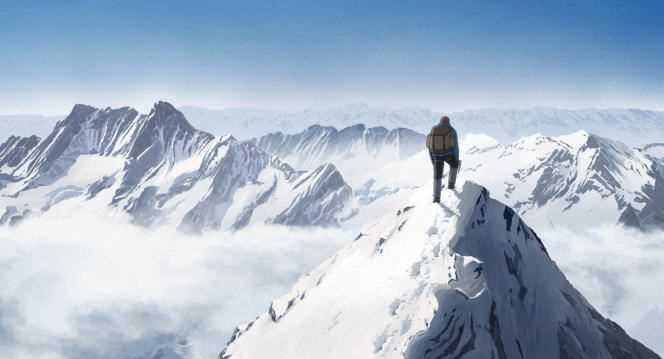THE OPINION OF THE “WORLD” – NOT TO BE MISSED
It was necessary to imagine it, and especially to dare it, this crossing between two schools of drawing, certainly at the antipodes, but which nevertheless had things to say to each other: the Franco-Belgian line, generally qualified as “clear” , and the Japanese manga, with its graphic dynamism and its sense of division. A perfect meeting ground was offered as on a plateau in the work of Jiro Taniguchi, designer of the unforgettable Distant neighborhood, born in 1947, whose detailed realism and Proustian resonances did not mask their European tendency.
It is precisely in this fund that the host Patrick Imbert went to draw (The Big Bad Fox and other tales, 2017) to bring to the screen The Summit of the Gods, based on the eponymous five-volume manga published by Taniguchi between 2000 and 2003, itself taken from a novel by writer Baku Yumemakura. Far from any exoticism as from any pastiche, the film is a tremendous success which above all testifies to a scrupulous respect for the original material, which it never seeks, and fortunately, to westernize. Rather, it would be a kind of translation into the neighboring language of animation.
Set in the midst of mountaineering, the story skillfully juggles multiple strata of time. Fukamachi, a Japanese mountain photo reporter, is investigating a mysterious camera that would have belonged to the pioneer climbers of Everest and would be likely to question the date of his first ascent. In Kathmandu, he stumbled upon Habu Joji, a formerly renowned mountaineer who had left the circuit for a few years. Compiling the documents about him, the journalist retraces his story, which he discovers viscerally attached to the escalation, but above all infinitely tragic, strewn with failures, disasters, injustices and deaths. Through him is revealed the harsh face of this summons call, a demanding fad that can border on obsession and testifies to an obscure inner necessity.
Breach into the imagination
First remarkable thing: the animation does not lend itself to phantasmagoria, as its labile condition could limit it to it, but aims to restore, as faithfully as possible, not only a natural relief – that of the mountain rising up like an eternal challenge to human capacities – but also to the practice attached to it – mountaineering, dramatized with scrupulous attention to detail. It is therefore on the side of realism that Patrick Imbert attacks his story, 2D animation guaranteeing the fullness of an experience which, in real-life cinema, would have required a number of artifices. Realism which primarily concerns the mobility of the characters, brushed with a simple line, but whose gestural precision and expressiveness constitute a feast for the eye. Added to this is the splendor of the mountainous settings, where, by a constant play of variations of scale, the feeling of verticality, but also the disproportion between man and the relief, the rapid variations of the climate are represented in all their strength.
You have 32.79% of this article to read. The rest is for subscribers only.
